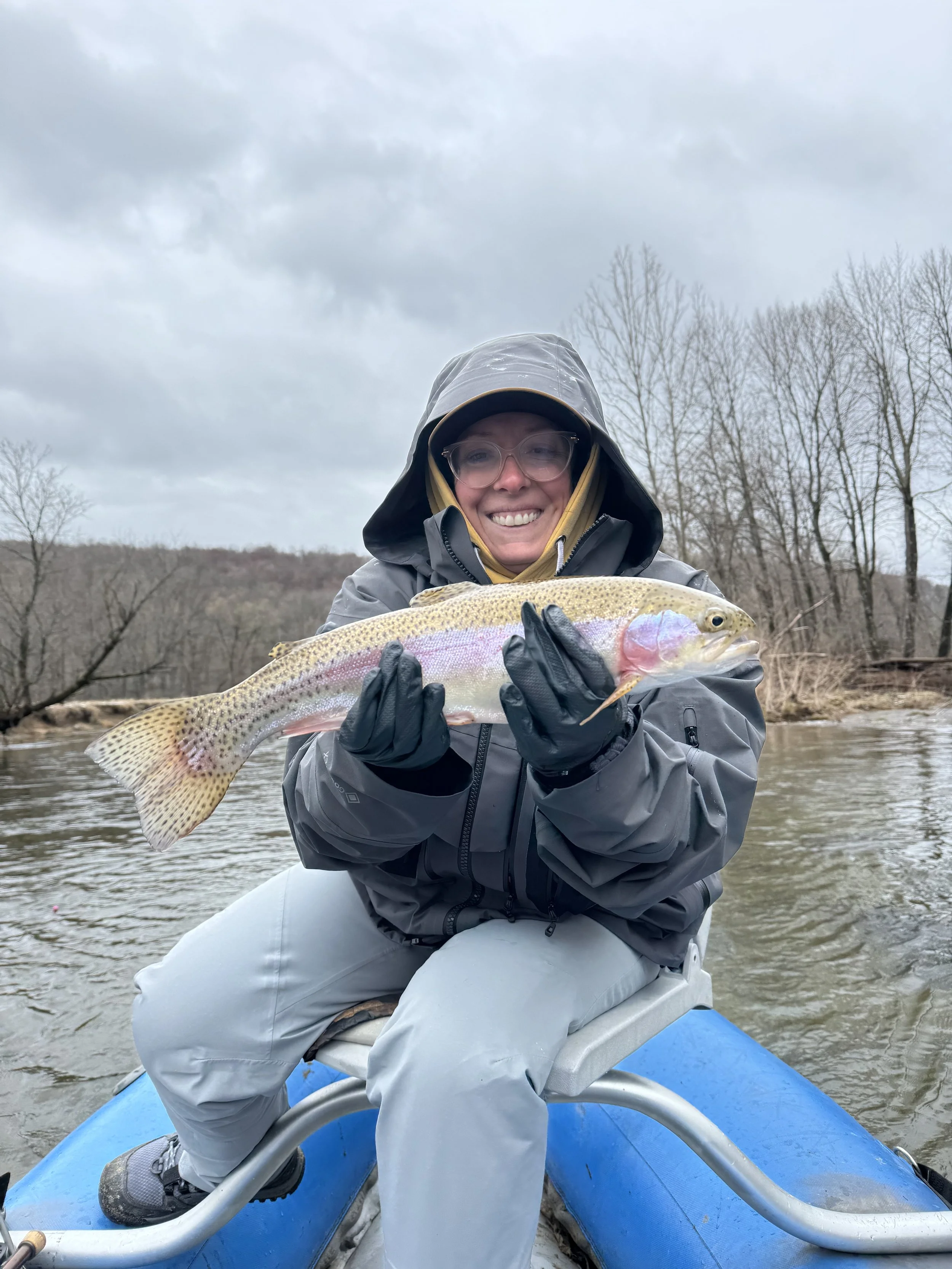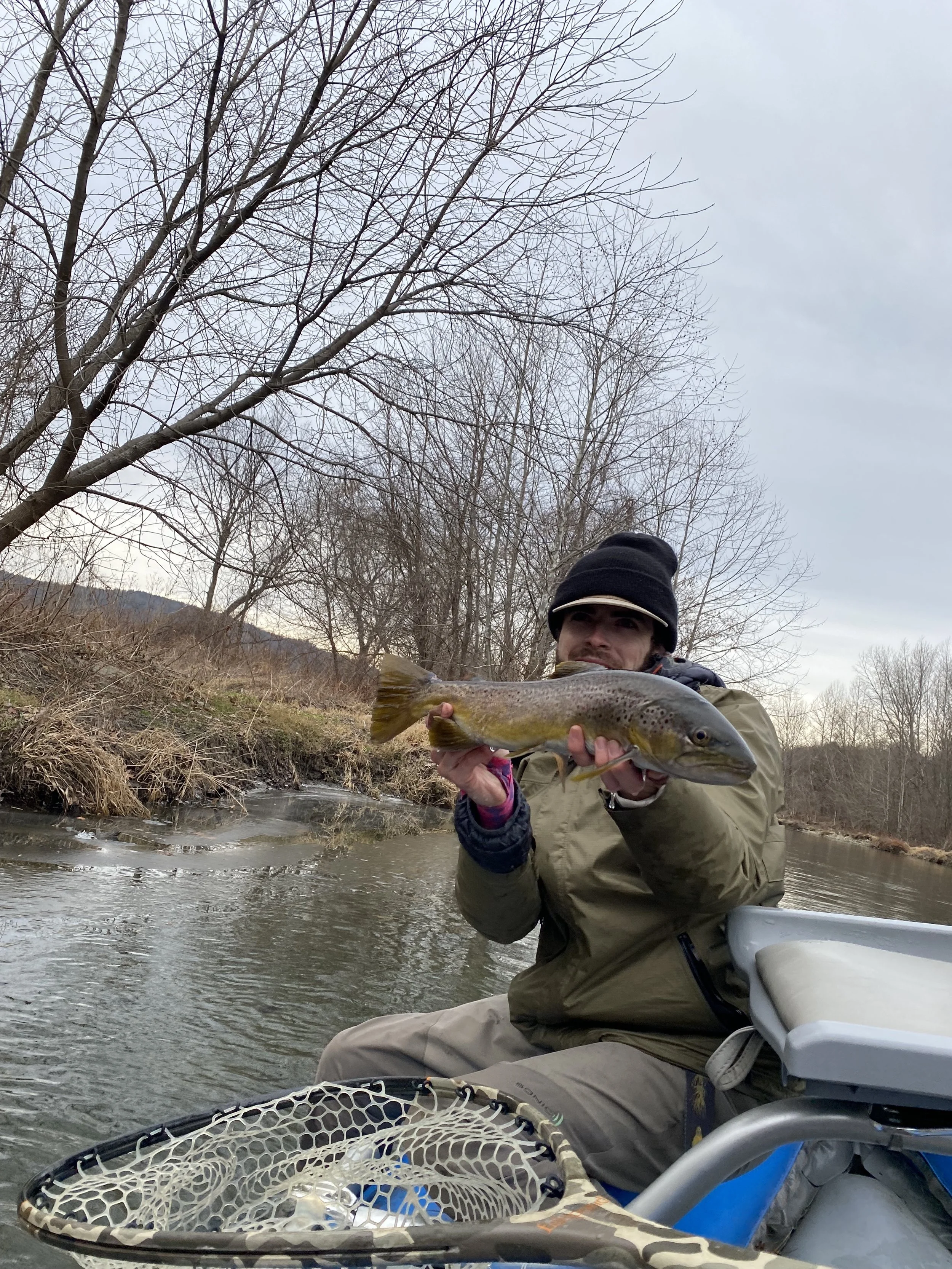Guide to Winter Fly Fishing New England
Winter fly fishing in New England offers a unique experience that combines solitude, skill, and the quiet beauty of cold-water rivers. While most anglers pack away their gear when temperatures drop, those who stay on the water discover trout behaving differently and feeding in distinct patterns. The challenge of reading icy flows and matching subtle hatches makes this season especially rewarding. In this post, we’ll explore what makes winter fly fishing across New England special, how to adjust your tactics and gear for cold conditions, and where to find productive waters that remain open through the colder months. Whether you’re an experienced angler or looking to extend your fishing season, you’ll learn practical strategies and safety tips to make your next winter outing both successful and enjoyable.
Understanding Winter Conditions in New England Trout Waters
How cold water affects trout behavior
When water temperatures drop into the 30s and low 40s, trout metabolism slows significantly. They burn less energy and feed less often, which means patience and precision are key for winter anglers. Instead of chasing food, trout become opportunistic and conserve energy by holding in slow, deep water. They look for easy meals that drift right to them. In these colder months, success comes from slowing down your presentation and using smaller patterns that mimic natural insects. Observing fish behavior and understanding how temperature influences feeding times can make all the difference.
Ice, snow, and access constraints
Winter in New England can create serious access challenges. Many rivers and smaller streams freeze over completely, while others develop thick ice shelves along the edges. This makes wading risky and limits where you can cast safely. Snowpack and road closures can also affect how easily you can reach a river, especially in remote areas. Planning ahead is crucial:
Check local conditions before heading out.
Avoid walking on ice-covered banks or unstable shelves.
Consider using traction cleats and a wading staff for stability.
Knowing where access points remain open during the coldest months can help maximize fishing time while keeping you safe.
Water temperature, flows, and thermal refuges
Not all waters shut down in winter. Some rivers benefit from natural springs or dam releases that keep temperatures more stable. These areas, known as thermal refuges, often attract higher concentrations of fish when surrounding waters become too cold. Trout gather near warmer inflows, tailwaters, and deep pools where they can feed with minimal energy output. Checking online stream gauges or local reports can help identify where flows remain consistent and ice buildup is minimal. Anglers who pay attention to these microclimates can often find excellent fishing opportunities even in mid-January. Understanding these patterns is key to locating active fish and planning productive winter trips.
Gear and Tactics for Winter Fly Fishing
Rods, lines, and leaders
Winter fishing demands equipment that performs well in cold and sometimes icy conditions. A medium-action 4- to 6-weight rod provides the right balance between sensitivity and backbone for drifting nymphs or slowly stripping streamers. Fly lines with a slightly heavier head help load the rod efficiently in cold air. Floating or sink-tip lines are often preferred for versatility, while full-sink lines can be helpful for deep pools. Leaders should be shorter and stronger than in summer conditions. A 7- to 9-foot leader with 3X or 4X tippet allows better control in slower water and helps manage ice buildup. Always carry spare leaders and tippet spools since frozen conditions can make knots brittle.
Fly patterns that work in winter
Trout in cold water respond best to simple, natural patterns that require little effort to chase. Nymphs are the foundation of most winter fly boxes. Productive options include:
Pheasant Tail and Hare’s Ear nymphs
Zebra Midges and small Copper Johns
Stonefly nymphs in darker colors
Streamers can also work when presented slowly. Woolly Buggers, leech patterns, and small sculpin imitations tempt bigger fish conserving energy in deep water. Egg patterns and soft hackles can also be effective in tailwaters or stocked areas. Matching size and presentation to the conditions is often more important than using exact colors.
Presentation strategies
Success in winter fly fishing relies on precision and patience. Trout will not move far to take a fly, so accuracy and depth control are crucial. Drifting flies along the bottom with minimal drag often produces the best results. Use strike indicators or tight-line (Euro) nymphing techniques to keep the fly near the feeding zone. Short, controlled casts work better than long ones since frozen guides and line stiffness can affect distance. Slow retrieves with streamers or subtle twitches on the pause often trigger strikes from larger, resting trout.
Preventing ice and frost issues
Cold conditions bring their own set of challenges for anglers and equipment. Ice buildup in guides and reels can quickly end a productive day if not managed properly. Keep these simple habits in mind:
Periodically dip rod guides in the water to clear ice.
Use line conditioner or a small amount of vegetable oil to prevent freezing.
Keep reels dry and avoid setting them in snow.
Store spare gear inside your jacket to keep it warm.
Attention to small details like these keeps your gear functioning smoothly and helps you stay focused on fishing rather than fighting the cold.
Top Winter Fly Fishing Spots in New England
Deerfield River – Western Massachusetts
The Deerfield River is one of the most reliable winter fisheries in New England and a prime destination for our guided winter trips. Thanks to multiple hydroelectric dams, this tailwater maintains stable flows and water temps, keeping trout active even in freezing conditions. Look for deep pools and softer seams—perfect for nymphing and swinging small streamers. Productive winter stretches include Fife Brook and Shelburne Falls. A steady hatch of midges and tiny mayflies keeps both stocked and wild rainbows feeding. With smart wading and attention to the dam release schedules, this river offers steady winter action.
Battenkill River – Southwestern Vermont / Eastern New York
If you’re after wild browns and a more traditional freestone experience, the Battenkill River delivers. Winter conditions bring low, clear water and ultra-spooky fish. You'll need precise drifts and long leaders. Look for trout holding in deep, slow runs and undercut banks. Patterns like small Pheasant Tails and stoneflies work well in winter. The Vermont stretch above Arlington may freeze solid in cold snaps, but mid-river zones closer to Manchester typically remain open enough to wade. For newcomers, hiring a guide helps pinpoint the soft water and hidden lies these fish favor.
Walloomsac River – Bennington, Vermont
The Walloomsac River is a great option for winter anglers who want consistent results without the pressure of harder rivers. A mix of stocked and wild trout, combined with moderate groundwater input, keeps sections fishable throughout winter. The tailwater-like sections below dams hold fish reliably. Go deep and slow with midge larvae, small caddis patterns, or eggs. When temperatures spike, try a small streamer. Easy access around Bennington makes this river a solid choice for winter walk-and-wade outings.
Swift River – Central Massachusetts
The Swift River is a classic tailwater fishery fed by the Quabbin Reservoir, providing ice-free water and stable temps year-round. Its crystal-clear flows and high trout visibility require a stealthy approach. Use light tippet (6X or 7X) and tiny midge or emerger patterns for best results. The catch-and-release section near Belchertown remains open all winter and offers some of the most consistent trout action in the region. Due to its reliability, the Swift is a frequent feature on our winter itinerary.
Hoosic River – Southwestern Vermont to Massachusetts
The Hoosic River offers a mix of freestone and tailwater characteristics, and its multiple tributaries provide good access all winter. Areas near Pownal, VT, and North Adams, MA, often stay open thanks to steady groundwater input. Fish hold in the deeper pools and soft eddies, great spots to drift small nymphs or slow-strip streamers. Ice along the edges is common, but mid-channel water stays open. The Hoosic is a solid local choice for anglers seeking wild browns and rainbows in a diverse, accessible watershed.
If you're looking to fish any of these rivers during the colder months, Green Mountain Angler offers tailored winter outings: gear, strategy, and access included. Whether you're new to winter fly fishing or want to sharpen your cold-weather tactics, we’ll get you on the water and onto fish.
Safety, Preparation, and Logistics
Cold weather safety and layering
Fishing in New England during winter demands careful preparation for cold temperatures and unpredictable weather. Dressing in layers is the foundation of staying safe and comfortable on the water. Start with a moisture-wicking base layer to keep sweat away from your skin, followed by an insulating layer such as fleece or wool. A waterproof and wind-resistant outer shell is essential to protect against snow, wind, and splashing water. Neoprene or insulated waders help retain warmth, and fleece-lined pants add an extra layer of protection. Gloves and hats are vital since most body heat is lost through extremities. Always carry spare gloves and socks in a dry bag in case you get wet. Staying warm and dry prevents fatigue and helps maintain focus while fishing in challenging conditions.
Navigation, gear redundancy, and emergency kit
Winter environments can be unpredictable, so preparation is key to safety. Always plan your route and know where access points are before heading out. Bring a detailed map or download offline navigation on your phone since cell service can be unreliable in remote areas. A small emergency kit should include:
A headlamp or flashlight with spare batteries
First aid supplies
Fire-starting materials and a space blanket
Hand warmers and an energy bar or two
Keep essential gear like leaders, tippet, and fly boxes organized in waterproof pouches. Carrying backups of small items such as nippers, indicators, and tippet ensures you can keep fishing even if equipment freezes or breaks. Communicate your plans with someone before you go, and never fish alone in extreme conditions.
Permits, regulations, and stocking rules
Understanding winter fishing regulations is just as important as having the right gear. Each New England state has different rules for which rivers remain open to catch-and-release fishing during the off-season. Vermont, Massachusetts, and New Hampshire all have year-round sections, but specific stretches may close or have restricted tackle regulations. Always confirm the latest updates through the state fish and wildlife departments before your trip. Many winter fisheries are managed as special regulation zones, so barbless hooks and artificial-only rules often apply. Stocking programs may also continue in select tailwaters, offering consistent fishing opportunities throughout the colder months. Staying informed not only keeps you compliant but also helps protect the resource for future seasons.
Working with a guide
Hiring a professional guide during winter is one of the best ways to fish safely and effectively. Local guides like those at Green Mountain Angler bring first-hand knowledge of river access, water conditions, and fish behavior during cold weather. They can help identify productive stretches, teach winter-specific tactics, and ensure proper safety measures are followed. A guide can also provide the right equipment for the conditions, from cold-weather fly lines to effective winter fly patterns. This not only saves time but also reduces the risks associated with icy terrain and unpredictable weather. Whether you are new to winter fly fishing or an experienced angler looking for advanced strategies, guided trips can make your experience more productive, enjoyable, and safe.
Frequently Asked Questions
Can you fly fish in New England during winter?
Yes, you can fly fish in New England during winter, although conditions narrow your options. Rivers with steady flow, groundwater inputs, or dam releases often remain open and support trout activity even in cold months. You’ll need to adapt your tactics, use proper gear, and pick your times carefully.
What kind of flies work best for winter trout fishing?
Small, subtle flies are most effective in winter because trout’s metabolism slows and they inspect offerings more carefully. Patterns like midges, Pheasant Tail nymphs, small stoneflies, and soft hackles often outperform large, flashy flies in cold water. Match size, weight, and natural movement more than color when choosing your fly.
How should you present flies during winter fishing?
In winter, precision counts over distance. You should present flies slowly, keep them near the bottom, and minimize drag with tight-line or indicator rigs. Small mends and short casts help in reducing unnatural movement, especially when guides or line might freeze.
Which New England rivers are best for winter fly fishing?
Tailwaters and dam‐influenced rivers are often the most reliable since they maintain more consistent flows and temperatures. Rivers like the Deerfield, Battenkill, Walloomsac, Swift, and Hoosic have stretches that can remain fishable in winter with local knowledge and access. Lower stretches and deeper pools near spring inputs are good starting points.
How do you manage ice and freezing gear on winter trips?
Ice on guides, reels, and lines is a constant challenge. To manage it, periodically dip guides in water to melt ice, carry spare lines or leaders, and store gear close to your body to keep it warm. Avoid letting water collect in reel mechanics, and consider using de-icers or line treatments to minimize freezing.
Is hiring a guide worth it for winter fly fishing?
Yes, working with a local guide greatly increases your odds of success and safety in winter. A guide knows current access, flow schedules, holding water, and how to adjust tactics for that day’s conditions. They also provide reliable gear and emergency support, which are especially valuable in cold, remote settings.
Experience the Best of Winter Fly Fishing in New England
Winter fly fishing in New England offers a rewarding mix of solitude, challenge, and skill. By understanding how cold water affects trout behavior, using the right gear and techniques, and targeting productive rivers like the Deerfield, Battenkill, Walloomsac, Swift, and Hoosic, anglers can find steady action even in the coldest months. Staying safe, dressing properly, and planning with care are essential for enjoying the season. With the right preparation and local insight, winter can become one of the most fulfilling times to be on the water. If you’re ready to experience the quiet beauty and unique rewards of winter fly fishing, book a guided trip with Green Mountain Angler. Our experienced guides will help you find open water, active fish, and unforgettable moments on New England’s winter rivers.


